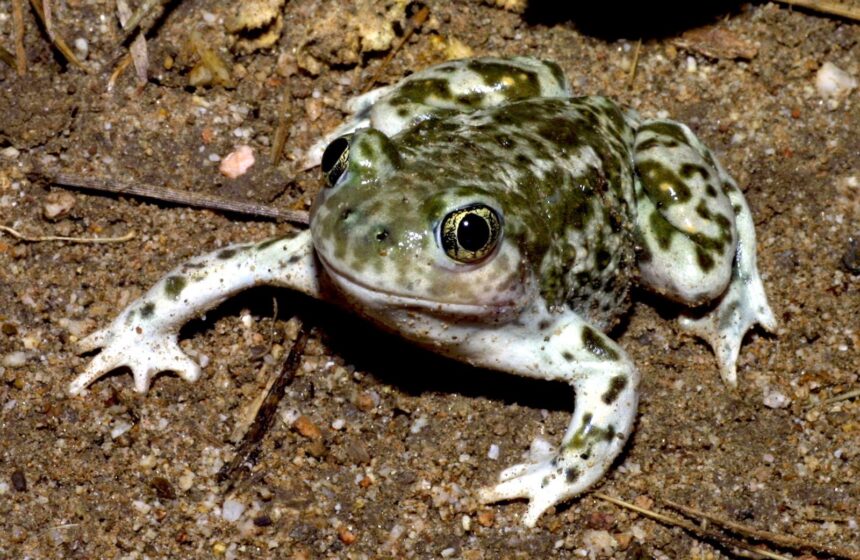U.S. Fish and Wildlife include California amphibian in Endangered Species Act protection proposal
Earlier this month, the U.S. Fish and Wildlife Service proposed the inclusion of the western spadefoot as a threatened species under the Endangered Species Act. The U.S. Fish and Wildlife Service has proposed the inclusion of the western spadefoot (Spea hommondii) as a threatened species under the Endangered Species Act. The small, cryptic amphibian spends most of its life underground and only emerges to breed during rainy seasons. The proposal includes both northern and southern populations. The Center for Biological Diversity's proposal to protect 53 amphibians and reptiles is based on its 2012 proposal to use the End Species Act of 1973. The western spadedfoot lives in burrows in grasslands and shrublands and relies on seasonal water sources for its breeding. However, 75% of these seasonal sources in California's Central Valley have been removed and over 80% of the habitat is now gone in Southern California. There is a high mortality rate for these transforming tadpoles due to drying water pools.

Published : 2 years ago by in Environment Science
CENTRAL COAST, Calif. – Earlier this month, the U.S. Fish and Wildlife Service proposed the inclusion of the western spadefoot as a threatened species under the Endangered Species Act.
The western spadefoot (Spea hommondii) is a small, cryptic amphibian that spends the majority of its life underground and only ascends to breed during rainy seasons in autumn and spring detail the Center for Biological Diversity.
Historically, the western spadefoot ranged throughout much of California and into northwestern Baja California and the proposal from the federal agency includes both the northern and southern populations explain the Center for Biological Diversity.
According to the Center for Biological Diversity, this inclusion of the western spadefoot now is based on the environmental organization's 2012 proposal to protect 53 amphibians and reptiles using the Endangered Species Act of 1973.
“I’m thrilled that the Fish and Wildlife Service has recognized the challenges that western spadefoots face, but it shouldn’t have taken 11 years to protect such clearly imperiled creatures,” said Sofia Prado-Irwin, Ph.D., a scientist at the Center for Biological Diversity. “These fascinating amphibians are being pushed to the brink by poorly planned sprawl and agricultural development, and climate change is heightening their risk of extinction. With Endangered Species Act protections, this little frog will have a chance for survival and recovery.”
While the western spadefoot spends most of its existence living in burrows in grasslands and shrublands, they rely on adjacent, small seasonal water sources to breed explain the Center for Biological Diversity.
Below is an example of those seasonal, or vernal, pools the western spadefoot need to breed and grow at the Carrizo Plain National Monument.
The Center for Biological Diversity details that 75% of these seasonal water sources in California's Central Valley have been removed and that more than 80% of the western spadefoot's habitat is now gone in Southern California.
The western spadefoot faces challenges due to other factors beyond habitat loss and/or fragmentation including drought due to climate change, chemical contaminants, noise pollution, non-native predation, and wildfires relay the Center for Biological Diversity.
The average lifespan of the western spadefoot is 12 years and tadpoles typically take about eight weeks to undergo metamorphosis into young toads, the fastest for any known frog or toad species detail Los Padres ForestWatch.
Despite that quick metamorphosis, Los Padres ForestWatch explains there is a notably high mortality rate for those transforming tadpoles due to drying water pools that typically last only an average of three to four weeks.
Topics: Wildlife, California
